
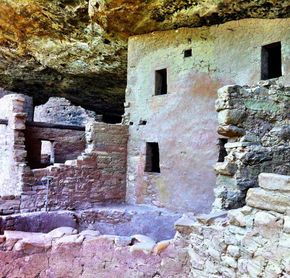
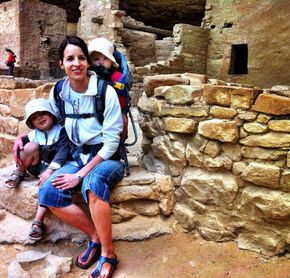
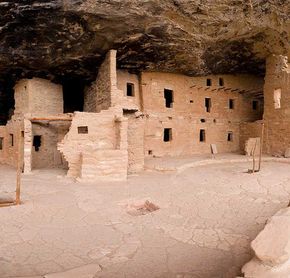
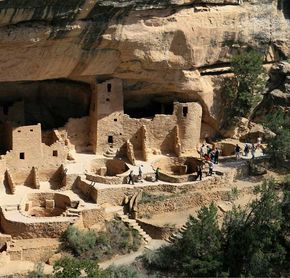
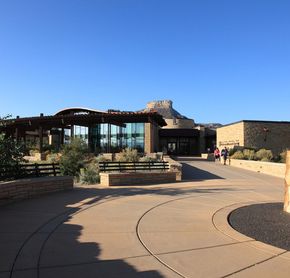

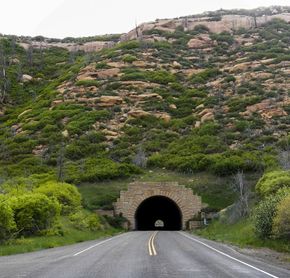
 Mesa Verde National Park, located in southwestern Colorado, has everything to please history enthusiasts. A unique journey back in time awaits you here. You'll quickly understand why it is part of the UNESCO World Heritage.
Mesa Verde National Park, located in southwestern Colorado, has everything to please history enthusiasts. A unique journey back in time awaits you here. You'll quickly understand why it is part of the UNESCO World Heritage.
In this magnificent nature, there are over 5000 archaeological sites, first occupied by the Anasazi (Navajo name meaning "the ancient ones") in the early 600s. The descendants of these old tribes, later called the Pueblos, lived in the troglodytic villages built in the canyon cliffs until the 1300s.
Add this park to your road trip itinerary and discover the way of life of this civilization.
MESA VERDE NATIONAL PARK |
The park is divided into two sectors: Chapin Mesa (the most visited, located in the southeast, open year-round) and Wetherill Mesa (less frequented, located in the southwest, open from mid-May to mid-September).
You can also explore the park by car, making stops as often as you wish to explore the ruins unguided and enjoy the many viewpoints.
There are 3 guided tours available of the dwellings: Balcony House or Cliff Palace in the Chapin Mesa area and Long House in the Wetherill Mesa area. Tickets for these guided tours must be purchased 14 days in advance online. Note that these sites are not accessible for young children.
Prepare your visit
|
Chapin Mesa
Chapin Mesa Archeological Museum
A visit to the museum will allow you to learn more about the life of the ancestral Pueblo people. A short 25-minute film is shown as an introduction. Several artifacts dating from prehistory are on display. The models, illustrating the evolution of people and their culture, are particularly interesting to see. There is also a souvenir shop.
Spruce Tree House
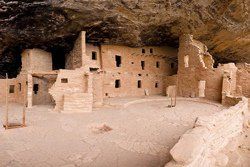 This dwelling, located in a 66 m wide and 27 m deep alcove, has 130 rooms and 8 kivas. Unfortunately, you will not be able to walk on this site since it has been closed for a few years due to rock falls. However, you can get close enough to see the house and take a photo.
This dwelling, located in a 66 m wide and 27 m deep alcove, has 130 rooms and 8 kivas. Unfortunately, you will not be able to walk on this site since it has been closed for a few years due to rock falls. However, you can get close enough to see the house and take a photo.
It's a nice stop to make with young children. A short trail leads you there from the museum.
|
Cliff Palace
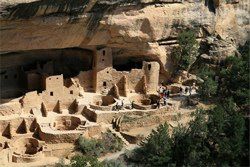 The Cliff Palace is the largest ancestral building carved into the rock that you will have the opportunity to visit here. This immense dwelling, perched on the edge of the canyon, has 150 rooms and 23 kivas. A famous shot of the national park is undoubtedly that of the Cliff Palace, which simultaneously demonstrates the greenery present in the park and the famous troglodytic constructions.
The Cliff Palace is the largest ancestral building carved into the rock that you will have the opportunity to visit here. This immense dwelling, perched on the edge of the canyon, has 150 rooms and 23 kivas. A famous shot of the national park is undoubtedly that of the Cliff Palace, which simultaneously demonstrates the greenery present in the park and the famous troglodytic constructions.
Balcony House
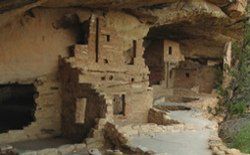 With 40 rooms, Balcony House is considered a medium-sized cliff dwelling. Tunnel, steep passages, and a 10 m entrance ladder make it the most adventurous course in the park. Imagine the challenges that the construction of the site and the life of the clan that occupied it must have represented.
With 40 rooms, Balcony House is considered a medium-sized cliff dwelling. Tunnel, steep passages, and a 10 m entrance ladder make it the most adventurous course in the park. Imagine the challenges that the construction of the site and the life of the clan that occupied it must have represented.
One-hour guided tours are offered from mid-May to the end of September. Make sure you stop at the visitor center to purchase your tickets.
Petroglyph Point Trail
Length (loop): 3.7 km
Duration (loop): 2 h
Level: Intermediate
Elevation change: 132 meters
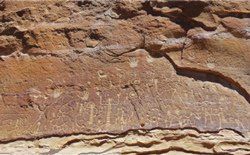 This 3.7 km trail offers stunning views of the canyons and takes you past rock engravings belonging to history. These symbolic drawings, immortalized on the rocky surface, are called petroglyphs. The trailhead is located next to the museum. Mandatory registration in the register located at the entrance.
This 3.7 km trail offers stunning views of the canyons and takes you past rock engravings belonging to history. These symbolic drawings, immortalized on the rocky surface, are called petroglyphs. The trailhead is located next to the museum. Mandatory registration in the register located at the entrance.
Mesa Top loop road
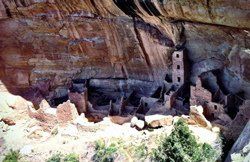 On this 10 km driving circuit, there are several paved trails leading you to easily accessible sites. You'll see surface and cliff dwellings and several viewpoints. Among the points of interest are Square Tower House and views of the Cliff Palace from Sun Point View .
On this 10 km driving circuit, there are several paved trails leading you to easily accessible sites. You'll see surface and cliff dwellings and several viewpoints. Among the points of interest are Square Tower House and views of the Cliff Palace from Sun Point View .
A bit of history...Around the 600s, groups of nomads began to settle on the mesa and in the cliff crevices. First in rudimentary huts, then in stick cabins covered with dried mud. From this moment, they are called the Pueblos, a Spanish word that means "village." By the 1000s, they learn pottery and develop farming techniques. The Mesa Verde plateau then has several thousand inhabitants. In the 13th century, a climatic cooling makes food resources scarcer and engenders insecurity, violence, and withdrawal to the cliff alcoves. The abandonment of these new villages, after just a few decades, remains a mystery... |
Wetherill Mesa
This area, located in the west of the national park, is open from mid-May to mid-October. It offers a more peaceful visiting experience. The access road, about 20 km, is particularly narrow and winding. It is not suitable for vehicles over 25 feet. From the parking lot, a 7 km loop gives you access to several viewpoints and trails. There are 5 main sites on Wetherill Mesa. This area is designed for walking and cycling. You'll also find an information center, a café, and restrooms.
Step House
 Located in a large alcove on the east side of the plateau, this house is a popular destination on Wetherill Mesa. The site is smaller compared to others but looks similar. You can access it without a guide, by taking a short trail.
Located in a large alcove on the east side of the plateau, this house is a popular destination on Wetherill Mesa. The site is smaller compared to others but looks similar. You can access it without a guide, by taking a short trail.
A ranger is always present when the ruins are open to answer your questions. The path to Step House is just north of the old tramway road.
Long House
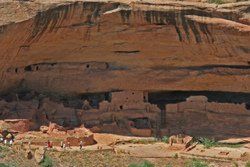 It is the 2nd largest house in the park. You can discover it in 2 hours, with a guide. This visit represents an intense physical activity due to the heat, elevation, and the difficulty level of the trail.
It is the 2nd largest house in the park. You can discover it in 2 hours, with a guide. This visit represents an intense physical activity due to the heat, elevation, and the difficulty level of the trail.
If you are in good physical condition and want to take the challenge, make sure to stop by the visitor center at the entrance of the park to buy your tickets before heading to the Wetherill Mesa area.
Beautiful, but not exceptional
(Translated by Google)
amazing
(Translated by Google)
To do but if you have time because a bit far from other parks
(Translated by Google)
Site in the heart of nature, guided tour with a ranger.
(Translated by Google) Allow 1 hour drive between the visitor center and the site.
no particular emotion
(Translated by Google) we should have avoided this site which will not leave a great memory; the scenic route is disappointing;











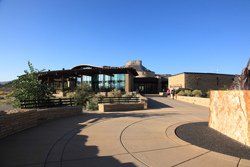
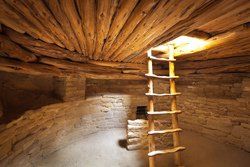 What is a kiva?
What is a kiva?